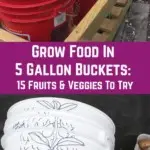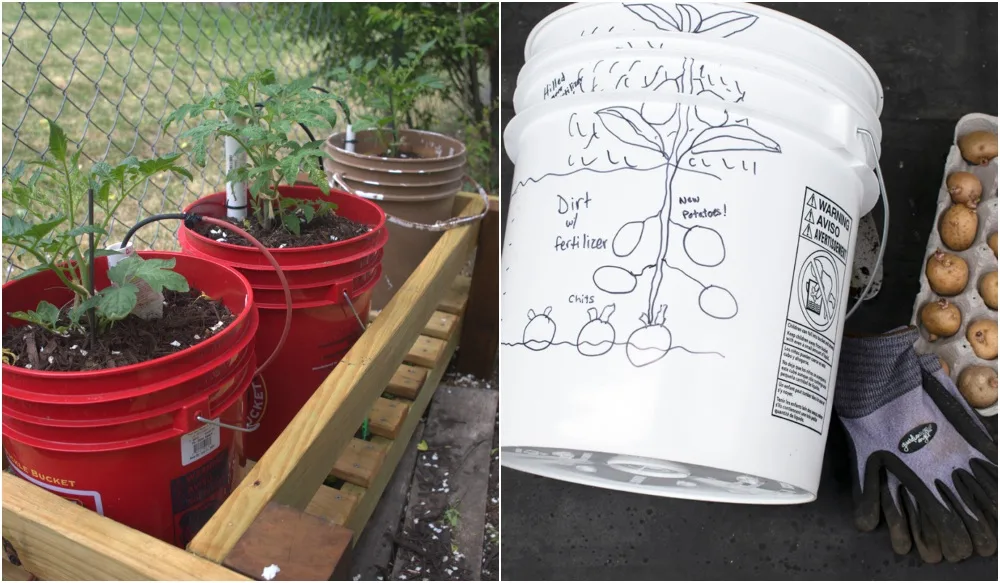
A 5 gallon bucket can be an incredible useful thing. There are many ways to use them around your homestead.
One of the most obvious ways to use these reclaimed containers is to grow food. There are a wide range of fruits and vegetables you can grow in 5 gallon buckets.
In this article, we’ll take a look at some of the most popular options, and give you some tips and tricks to help make sure you meet with success.
First of all however, it is worth noting that plastic buckets will require drainage holes. Some plants need better drainage than others but all will need some way for excess water to escape.
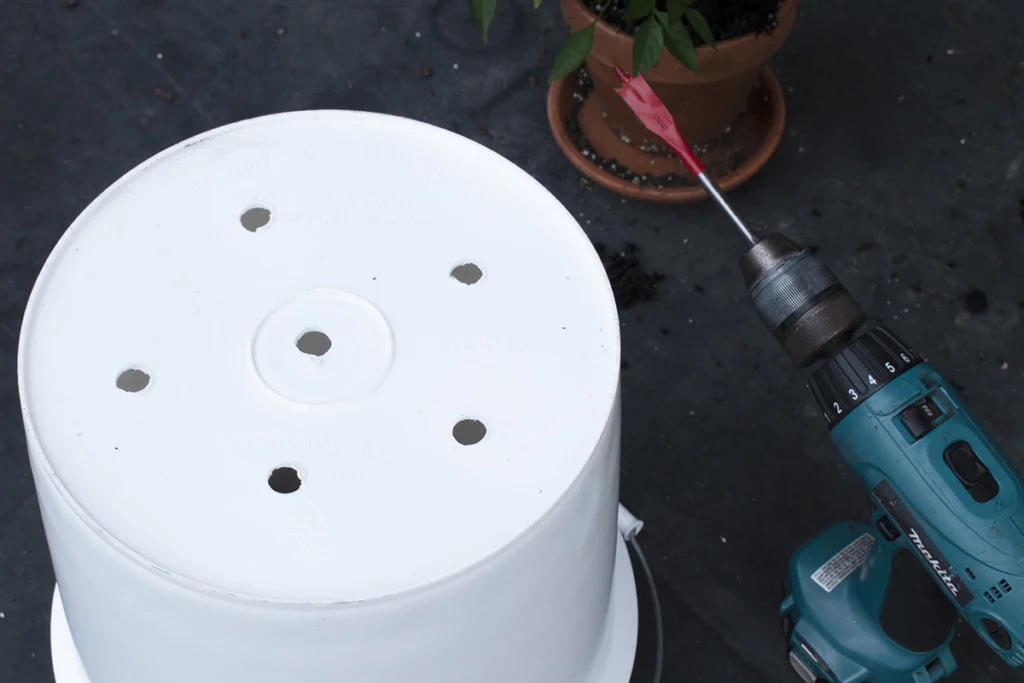
If your containers are placed on a hard surface, consider placing ‘feet’ or support structures below so water can drain more freely.
Another thing to bear in mind is that the color of the buckets will make a difference. Black or dark colored buckets will absorb and retain heat, while lighter colored ones will reflect light and stay cooler. White or pale buckets are therefore better for summer growing in most climate zones, while black buckets might be better for early spring/ fall/ winter growing in colder areas.
It also makes a difference where you place your buckets. So that is also something important to bear in mind.
Why Grow Food In 5 Gallon Buckets?
Five gallon buckets are brilliant. They are deep enough to accommodate the roots of most plants while narrow enough that you can fit many of them in small spaces, such as a patio or balcony.
Five gallon buckets are also lightweight so you can easily move them inside if bad weather threatens the health of your plants.
They are often free if you know where to look. Try local eateries, such as bakeries, delis and restaurants to see if they have any 5 gallon buckets going spare. Often these businesses have food delivered in bulk in 5 gallon buckets. Plus, if the buckets previous use was food based, then you know they are “food-safe” and you can grow your own food in them safely.
Without further ado then, let’s take a look at 15 of the most popular fruits and veggies that thrive when grown in 5 gallon buckets:
1. Tomatoes
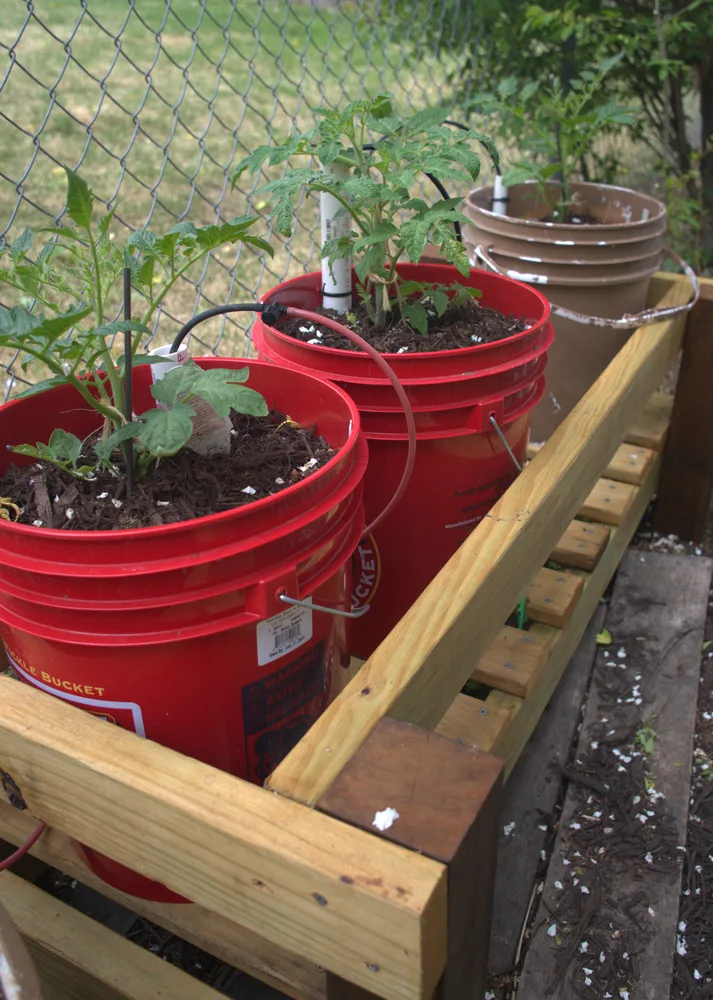
Tomatoes are one of the most popular options to grow in containers. One of the benefits of growing tomatoes in a bucket is that you can potentially move your plants indoors or undercover when cold weather threatens.
This can extend the growing season in colder areas, and give green tomatoes more time to ripen.
It is best to stick to growing just one tomato plant in each 5 gallon bucket. And if you are growing vining rather than bush types, then you will likely also wish to consider providing some support for your tomato plants.
Another interesting thing to consider is that you can also use 5 gallon buckets to grow tomatoes upside down. This could be a great way to make most of all the space at your disposal. Here’s our tutorial for growing tomatoes upside down.

Tip: Mulch your tomato containers with comfrey leaves when flowers and fruits begin to form to add fertility and conserve water. And use a comfrey liquid plant feed to improve fertility and increase the size of your tomato harvest.
2. Peppers
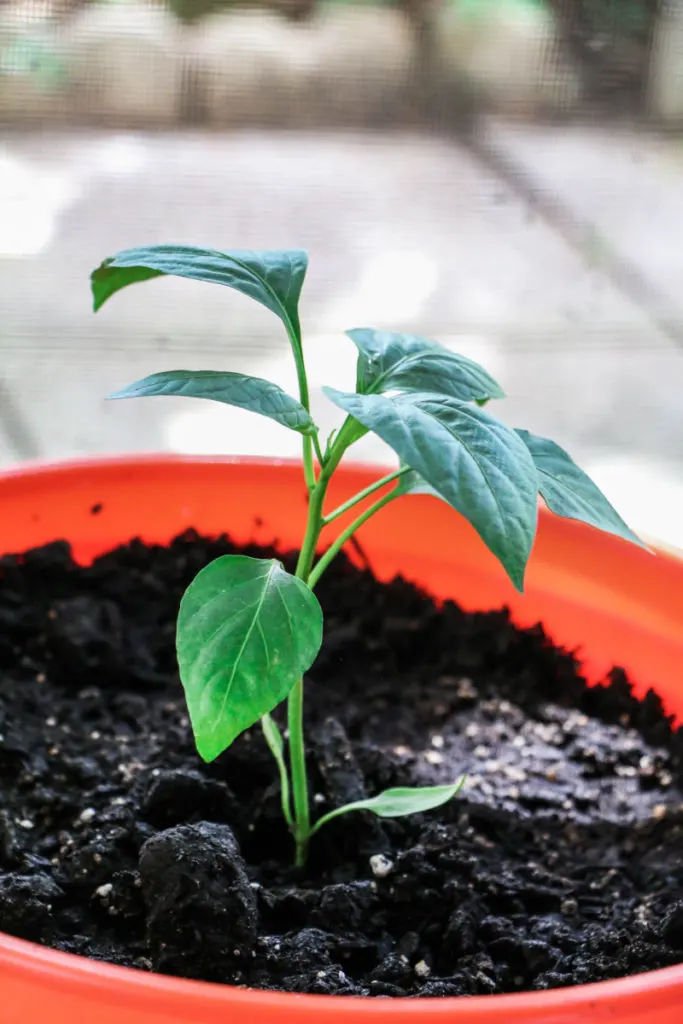
Peppers are another summer crop in the same family that can also do well in buckets. They are relatively shallow rooted which means they can do quite well in a container garden. In cooler climates, these too can be moved indoors or under cover when cold weather threatens at the end of the season.
Dwarf varieties of peppers could be grown in even smaller containers. But most varietals of sweet and chilli pepper will thrive in a 5 gallon bucket.
Just remember that pepper plants like relatively high humidity, and so when things are dry, in addition to watering, it can also be helpful to spray foliage and damp down hard surfaces near by to increase humidity levels.
Tip: While you should usually just place one pepper plant in a 5 gallon bucket, you could consider placing three dwarf varieties in the same container. You could also plant one smaller pepper plant alongside a couple of small herb plants. Aromatic herbs like basil and oregano can be beneficial as companion plants. You could also consider placing some garlic, scallions or chives around the edges of the bucket.
3. Eggplant
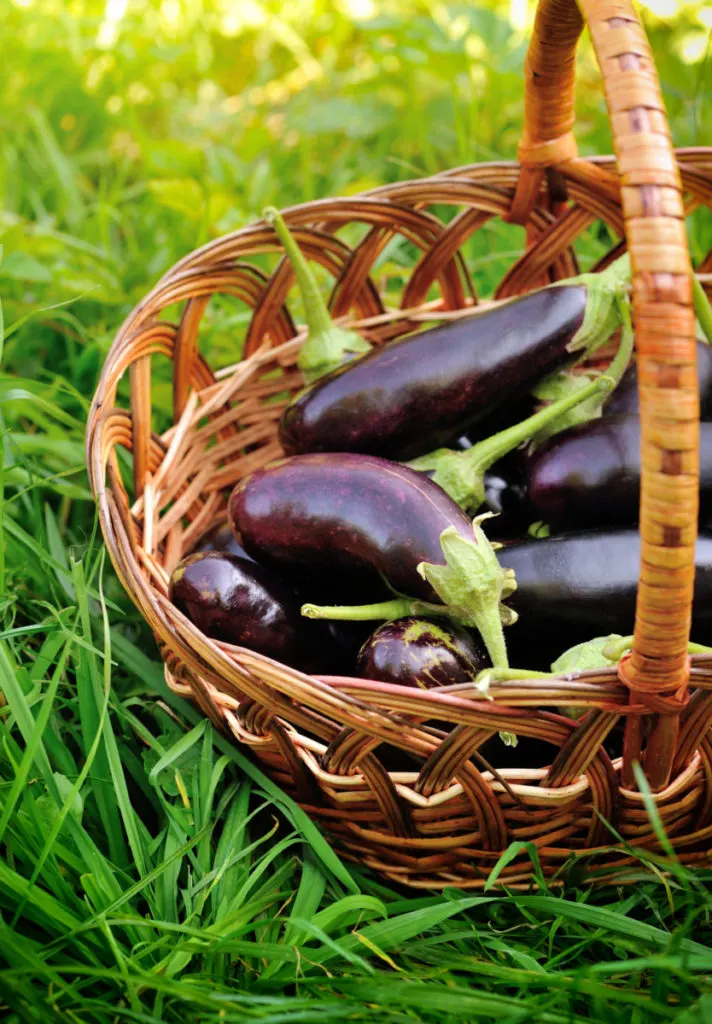
Another member of the nightshade family, eggplants can also be grown relatively easily in containers.
You can place a single plant in a 5 gallon bucket, and this should give it enough space and sufficient nutrients, as long as you feed and water well over the summer months.
As with tomatoes, it is a good idea to provide supports for your plants as fruits form and begin to grow. Certain dwarf varieties such as ‘fairy tale’ and ‘little finger’ are great options for containers, and there is also potential with eggplants with smaller fruits to consider growing these upside down too, to make the most of small spaces.
Here’s our total guide to growing your best crop of delicious eggplant.
Tip: Ensure free drainage – the best growing medium of eggplant is 2 parts standard potting soil, 1 part sand. This more free-draining mix provides enough nutrients, but let’s excess water drain out.
4. Zucchini
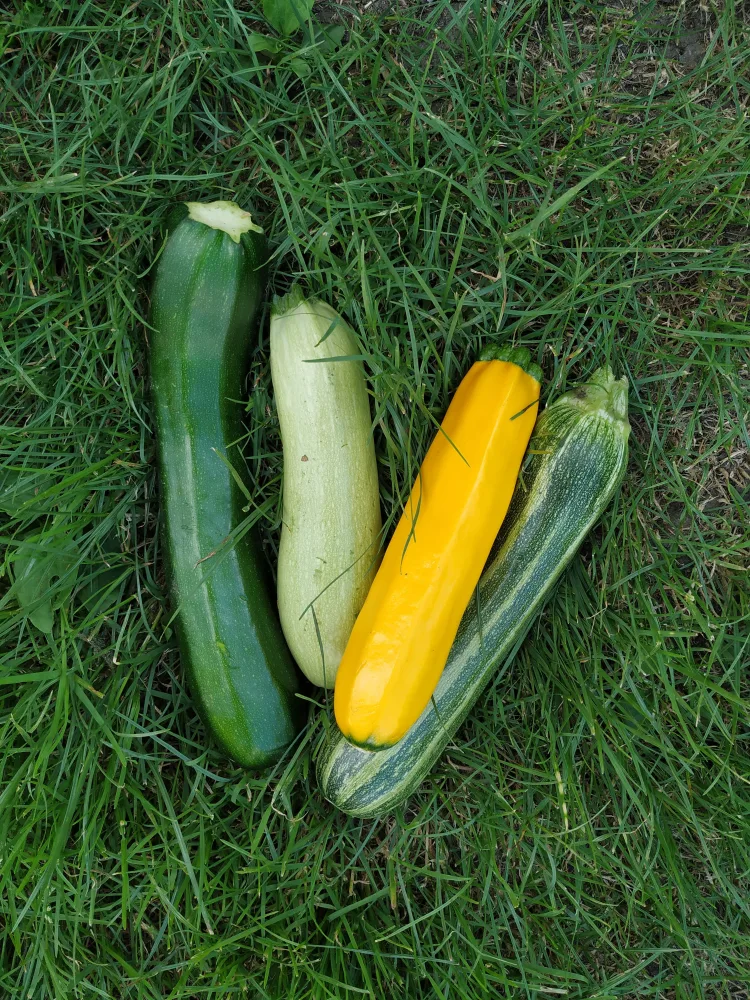
With similar rooting form and habit to eggplant, zucchini (or certain summer squash) can be great choices for growing in 5 gallon buckets.
It is important to remember that these are relatively thirsty and hungry plants, however. So you will need to keep up with watering (though good drainage is required too), and fertilize your plants.
Tip: Check out my article on Growing Zucchini in Containers to find tips for huge harvests.
5. Cucumbers
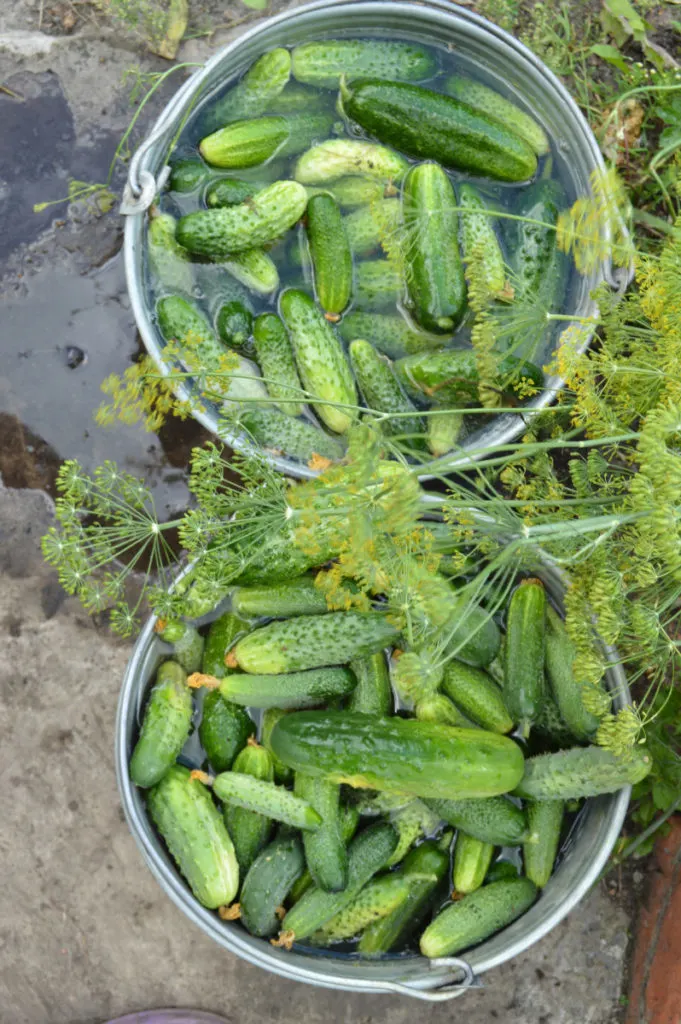
Cucumbers are another crop that is relatively easy to grow in a 5 gallon bucket. Even larger vining cucumbers can be grown in a 5 gallon bucket, as long as they are placed below a trellis or other form of support that they can climb up as they grow.
However, the best varieties of cucumber for growing in containers are bush-type cultivars, which have very short vines that don’t grow more than around 2-3 ft long. You can plant two of these per bucket.
If you are new to growing cucumbers – or have not grown them in containers before – choosing one of these varieties is a good way to go. ‘Burpless bush’, ‘Picklebush’, ‘Salad bush’ and ‘Bush champion’ are all options that you could consider.
Tip: Cucumbers don’t tend to transplant well. So direct sow seeds (planting two groups of three seeds and removing the excess upon germination). Or, if sowing indoors or elsewhere, use biodegradable pots that can be buried in your 5 gallon bucket along with the plants, so there is no root disturbance.
6. Lettuce & Other Leafy Crops
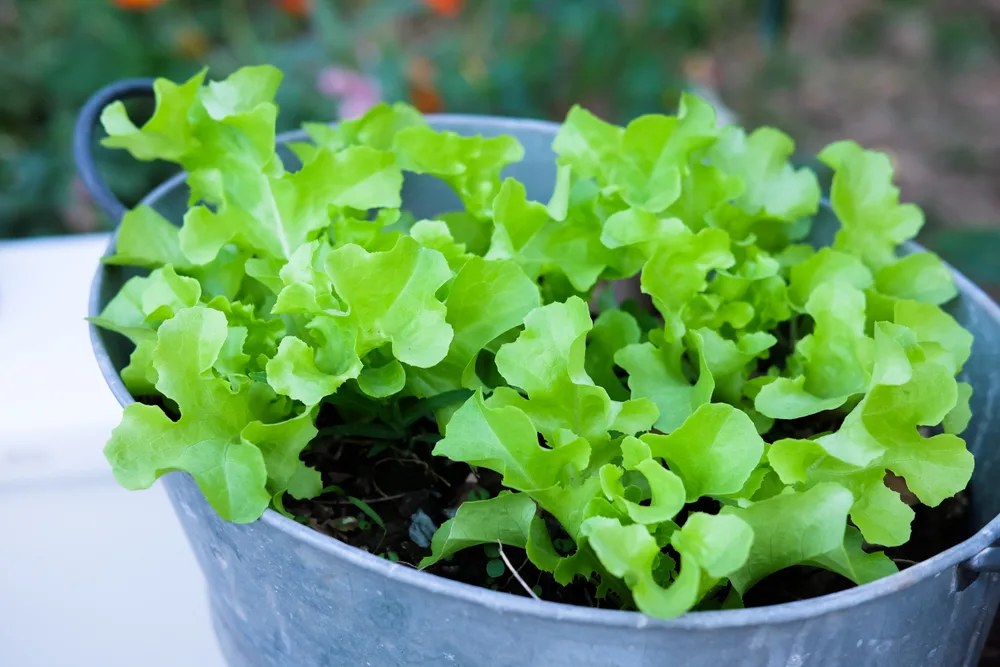
If you are a novice gardener, or new to container gardening, then loose leaf lettuce is a great place to start.
Just sprinkle your seeds over the surface of the growing medium in your bucket, trying to leave a spacing of ½ to 1 inch. Then thin to around 3-4 inches apart for cut and come again plants, and further apart for more mature plants or for headed types.
Read More: How To Grow Cut & Come Again Lettuce
Alongside lettuce, you can also grow other easy leafy crops like arugula, Asian greens, and leaf mustards, spinach and chard. These plants don’t really need the full depth of a 5 gallon bucket. So you could also consider taking a bucket and cutting holes in the sides. That means that you can plant these leafy crops into the holes too, and get a bigger harvest from a small space.
Tip: Feed leafy plants with a nitrogen rich plant feed over the summer months. Also, consider sowing radishes and/or scallions as useful companion plants in your lettuce growing buckets. (Or other herbs or edible flowers.)
7. Kale, Broccoli & Other Brassicas
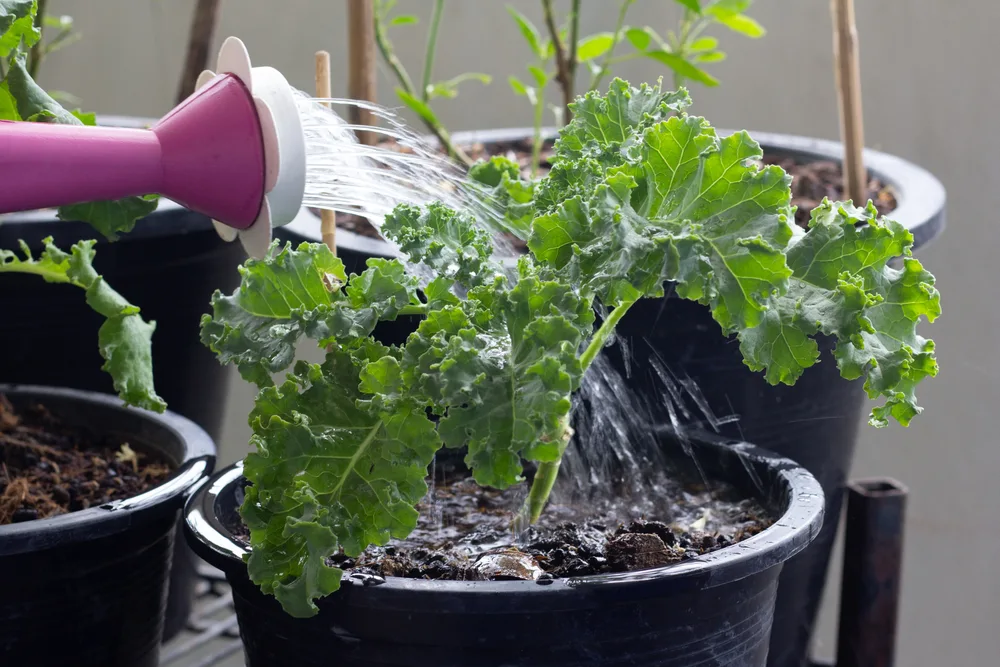
Larger leafy plants will also appreciate the space they have in a 5 gallon bucket. Individual kale, broccoli or cauliflower plants can be grown in their own buckets. With smaller plants like kohlrabi, you will have the space to grow several plants.
The benefit of growing larger leafy crops like these in 5 gallon buckets, especially in a warmer climate, is that you will have to opportunity to move them into the shade when temperatures are warm. Having the flexibility to move plants can be handy in other colder climates too – especially during the shoulder seasons.
I would highly recommend netting brassicas to protect them from birds and cabbage white butterflies and other pests. But you could easily create individual mesh cages around pots, or clump buckets together under a row cover.
Brassicas need plenty of fertility, so choose a good growing medium with plenty of high quality compost mixed in. And consider mulching around each plant with grass clippings, compost, or other nitrogen rich materials. You can also, as above, feed plants with a nitrogen rich liquid feed.
Tip: Consider growing lettuce around brassicas while they are small. The lettuces can then be harvested and eaten before the brassica plant grows to need more of the space and nutrients in the bucket.
8. Onions
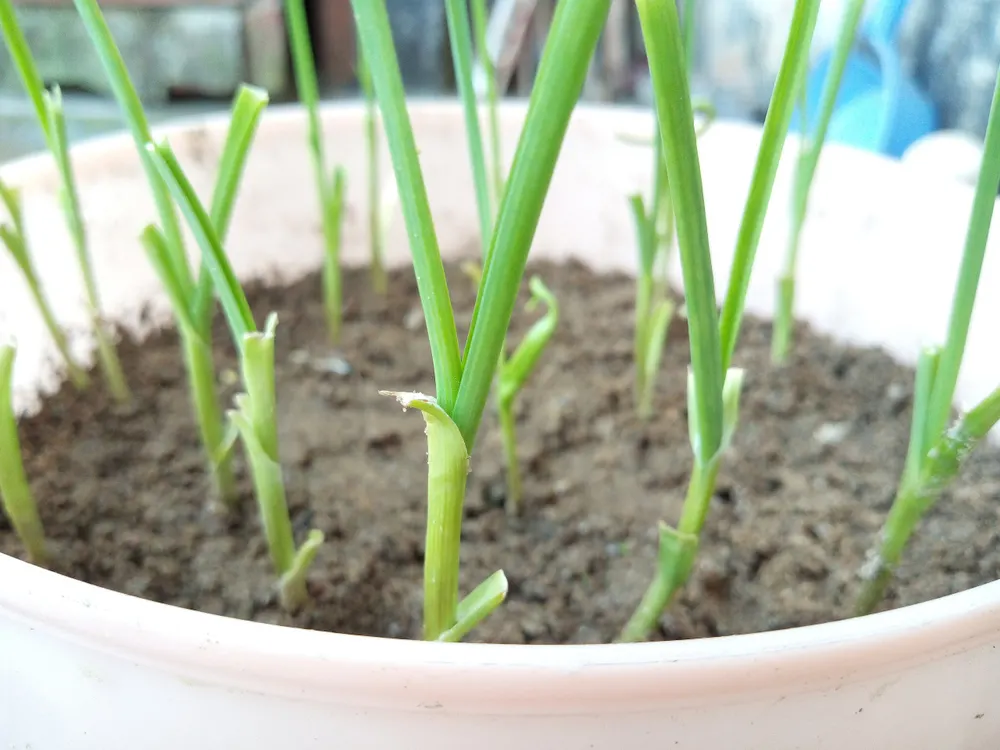
If you are trying to grow full-sized bulb onions, a 5 gallon bucket may not be the best container. You’ll only really have space to grow 3-5 onions in each one. However, typical bulb onions are not the only types of onion you can grow. Some other types are much better suited to growing in a bucket.
Scallions, as mentioned above, can work well when grown in a bucket alongside lettuce. And they can also work well around the edges of buckets used to grow a range of other plants.
I would particularly recommend growing some smaller alliums alongside carrots, to mask their scent and confuse carrot fly.
Tip: You can also grow bunching onions, chives, or other perennial onion types in a bucket alongside other perennial plants. As long as you keep topping up pots with fresh compost/ mulches and providing liquid feeds, you can grow perennials in buckets that won’t just provide food for one season, but for a few years to come.
9. Carrots & Other Root Vegetables
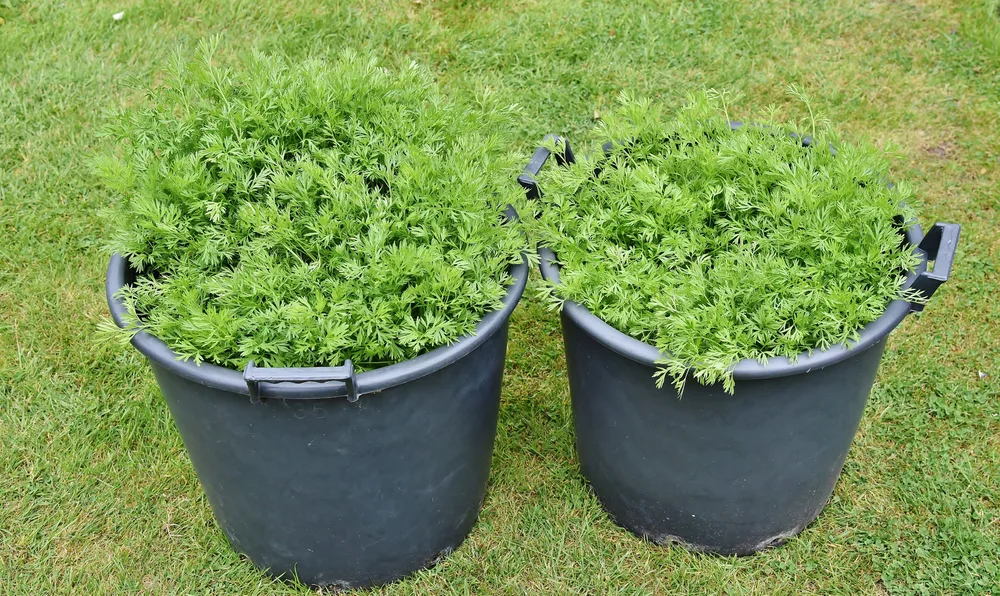
A number of different root crops can also be grown in 5 gallon buckets. You can successfully grow a wide range of different carrots in a 5 gallon bucket, since this is a container deep enough to allow even longer roots to grow.
Carrots have relatively low nutritional needs compared with many other common crops. But they do need a light and relatively free draining growing medium. Adding some sand to your potting mix can help make sure that the bucket drains more freely.
You can also grow other root crops such as parsnips, and beets in a 5 gallon bucket. But beets will need more water, more space and a somewhat richer soil since they have higher nutrient needs.
Tip: Successional sowing root crops will ensure a longer harvest period and help you make the most of space and time. Feed beets with a compost tea as the bulbs begin to form.
10. Potatoes
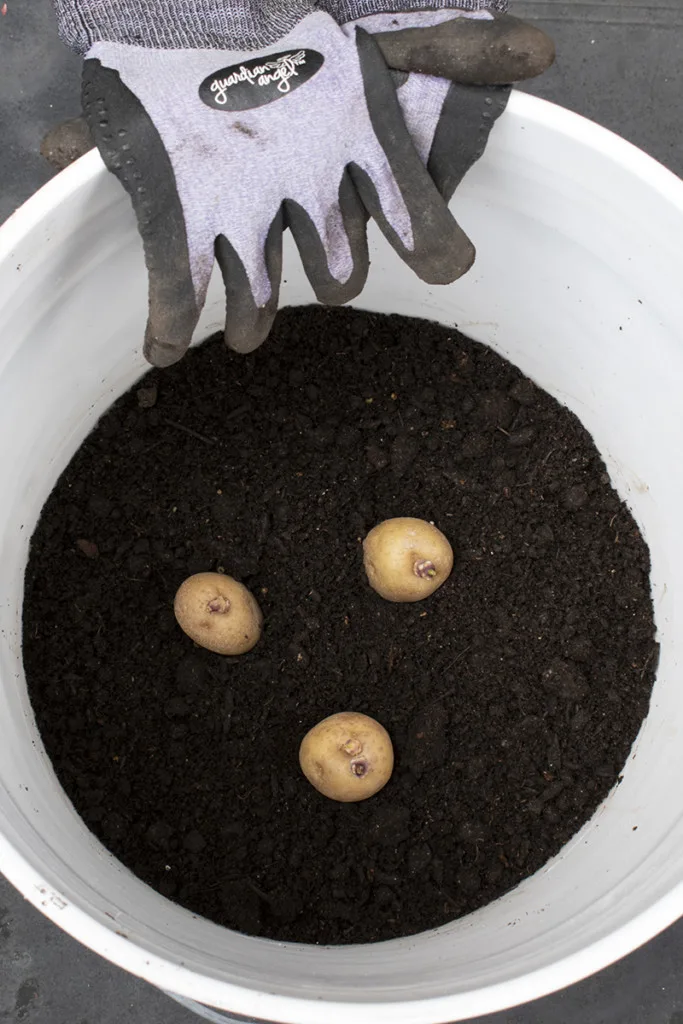
A 5 gallon bucket will also be suitable for growing a single potato plant. This might not sound like much, but you can easily get ten potatoes from each one that you plant. So you won’t need that many buckets to get a worthwhile amount.
When growing potatoes in a bucket, don’t add growing medium right up to the top. Instead, fill your bucket around a third full, then place a seed potato (eyes or chits upwards) on top of this growing medium. Then cover it with around 3 inches more nutrient rich growing medium.
Wait until the young plant grows up and then ‘earth up’. In other words, add more growing medium around it. This will encourage new tubers to grow out from the stem. I also like to add plenty of comfrey – both the leaves as mulch, and in liquid feed form to encourage good growth.
Take a look at Rural Sprout contributor, Tracey’s, step-by-step process for planting potatoes in a five gallon bucket.
Tip: Potatoes need plenty of water, so be sure to water well, especially during dry weather and warmer summer months.
11. Peas
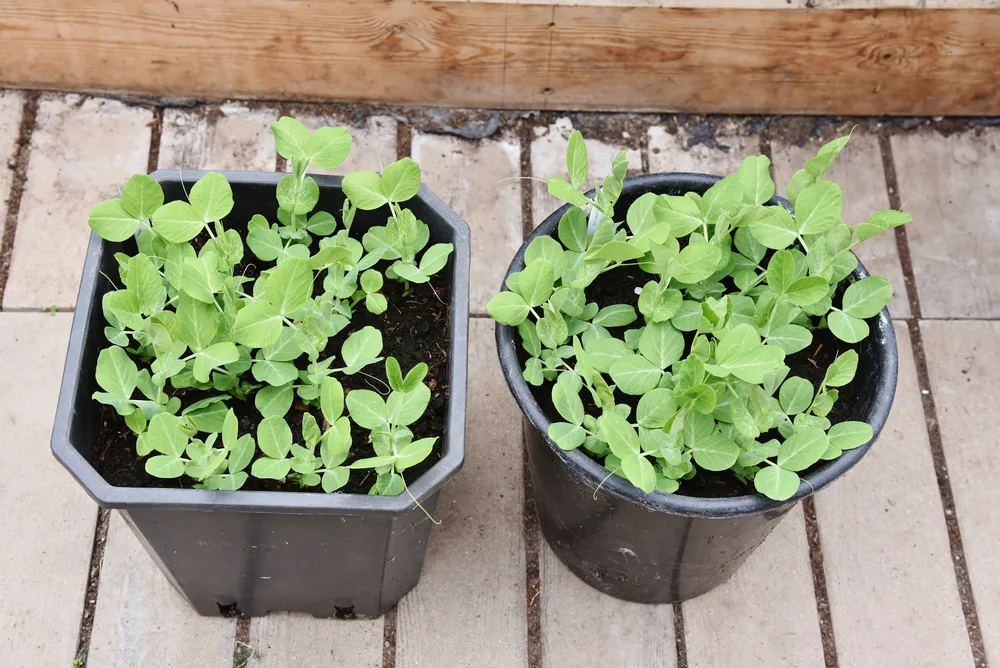
Peas are another of my favorite plants for growing in containers.
Simply place a branching twiggy stick into the centre of the bucket, making sure it is firmly anchored into the growing medium. Then sow pea seeds around the base.
I would recommend planting peas around 2 inches apart, to a depth of around an inch. Choose dwarf bush varieties to make sure the plants don’t grow too tall and cause the container to tip over.
Remember, you can harvest some of the smaller plants as pea shoots, which are great in a salad, while allowing some others to grow to give mange tout, snap peas or shelled peas later in the season.
Water well, and make sure the growing medium stays moist – but not waterlogged, as this can cause root rot. Mulch with compost to retain moisture.
Tip: Once the peas are done, cut them off at the base rather than uprooting them. Then use the same container to grow plants that will appreciate the nitrogen. (Peas are a nitrogen fixing plant.)
12. Beans
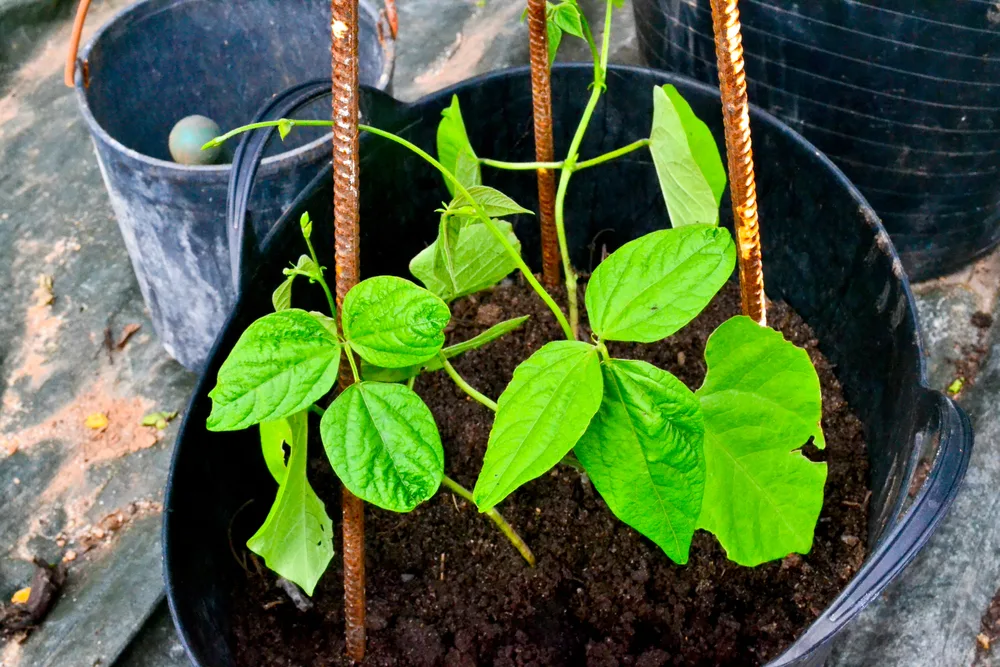
There is potential to grow other nitrogen fixing plants in 5 gallon buckets too. You can plant a single bush bean plant in each bucket. Or, if your bucket rests beneath a trellis or other support, you could consider growing 2-3 climbing/ vining beans in each one.
Beans also need plenty of water, so make sure you keep the soil moist, especially when the plants are in flower and when the bean pods start to form.
Tip: Consider lining up a row of 5 gallon buckets between two posts. String a wire or pole between those posts, and drop a wire or cane down into each bucket. You can then grow climbing beans like runner beans up each one, and grow plenty of beans in a relatively small space. In smaller spaces, you can also make a tipi or wigwam shape with three canes, and grow a climbing bean up each one.
13. Strawberries
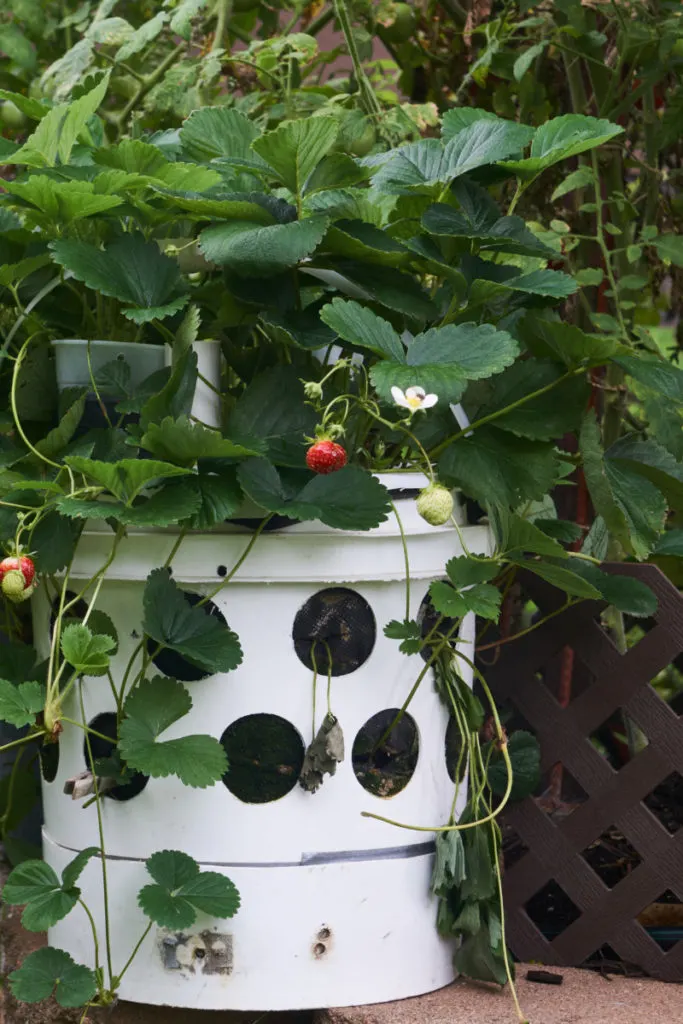
Strawberries are a relatively easy crop to grow and you can grow a lot in a single 5 gallon bucket.
As with lettuce, you might like to consider making holes in the sides of the bucket to create extra planting pockets for strawberry plants.
You could also consider stacking buckets to make a taller planting tower. For more innovative strawberry growing ideas, check out this article.
Strawberries need to be watered well, but the medium should be relatively free-draining. A potassium rich feed when the plants are in flower should help increase yield.
Tip: Consider using 5 gallon buckets as mixed planters, with a few strawberry plants, alongside some good companion plants like borage, thyme, sage etc..
14. Blueberries & Other Fruit Bushes
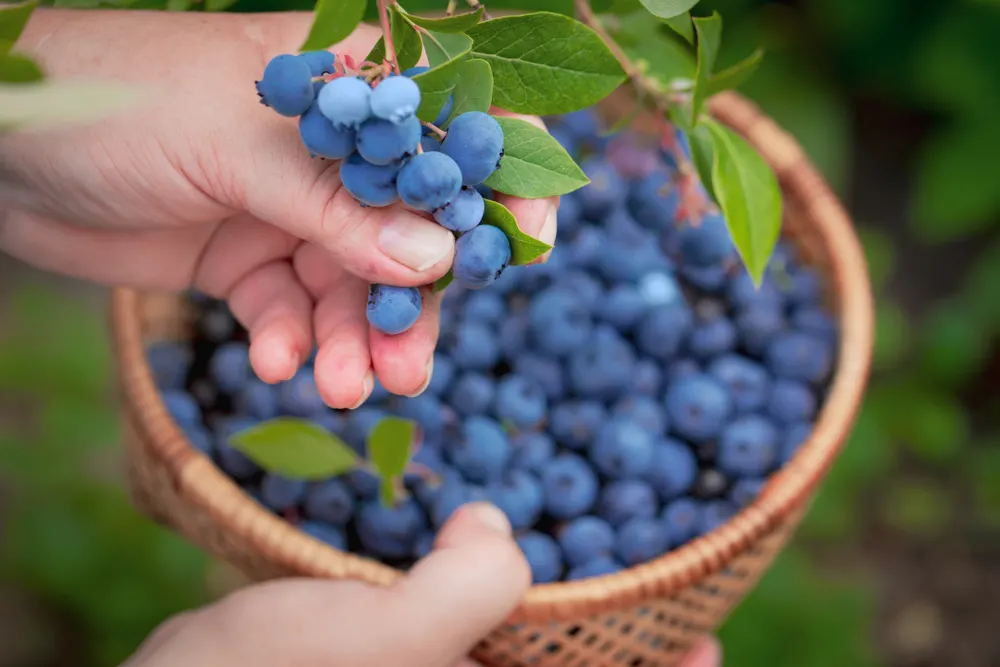
Blueberries are another soft fruit that works well in 5 gallon buckets. Many people grow blueberries in pots because they need ericaceous (acid) soil conditions.
Growing in a bucket in a suitable growing medium (with a pH of around 5.5) is therefore easier than amending a larger area of soil in a garden.
Tip: Check out this article for a full guide to growing blueberries in pots.
15. Raspberries & Other Fruit Canes
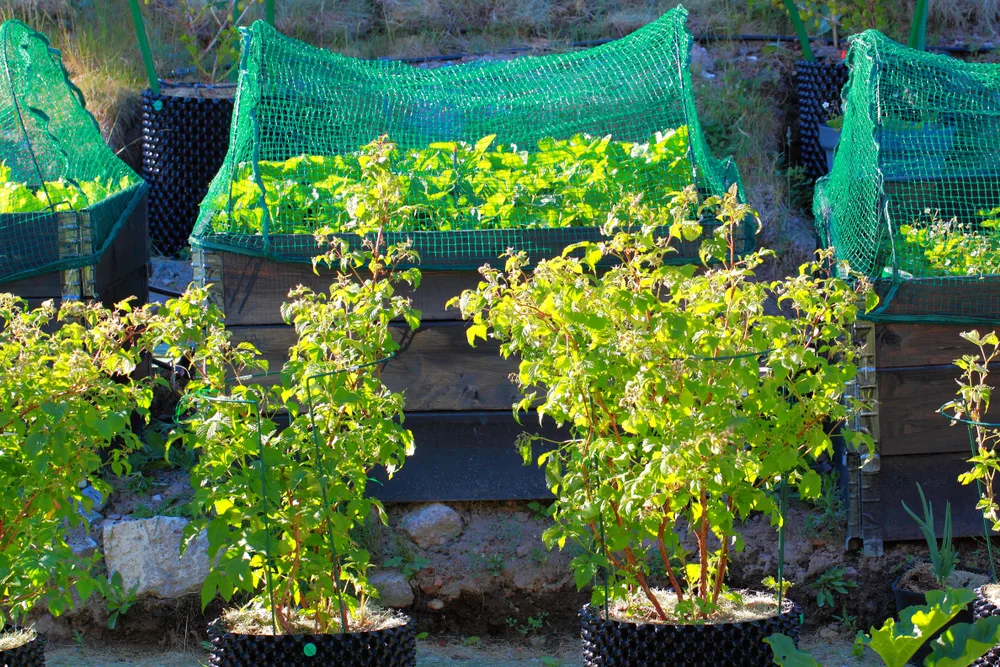
You can plant one raspberry cane (or other soft fruit cane) per bucket. Make sure that each one has a sturdy stake at the centre to provide support. Then tie your canes onto this support as they emerge. Almost any raspberry can be grown in a bucket in this way.
But you might achieve the best results if you opt for a dwarf variety. For example, ‘Raspberry Shortcake’ is one dwarf, thornless variety that you could consider. It grows just 2-3 feet tall.
Tip: Mulch well with compost or another thick organic mulch to retain moisture and maintain fertility. And make sure you prune raspberries correctly for the best results.
These 15 fruits and veggies you can grow in containers are just some of the many options available to you. If you bear in mind your area, and the requirements of the different plants you grow, there is no reason why a container garden can’t be just as diverse, productive and interesting as gardens where plants grow in the ground.

Get the famous Rural Sprout newsletter delivered to your inbox.
Including Sunday musings from our editor, Tracey, as well as “What’s Up Wednesday” our roundup of what’s in season and new article updates and alerts.


